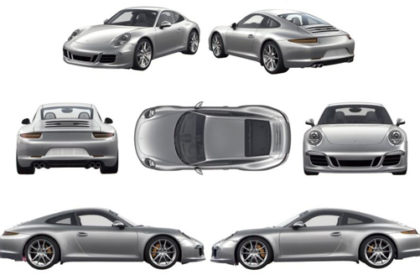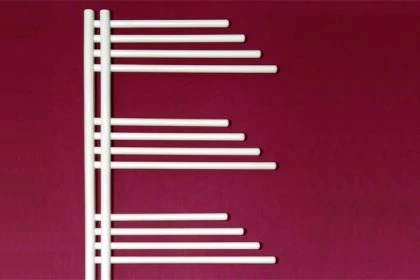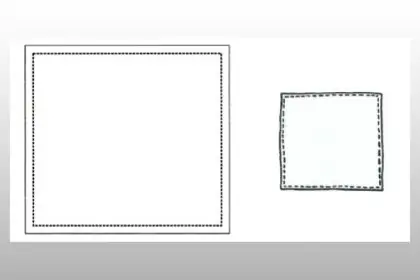The cancellation of two community designs in the design protection for the famous Porsche 911 was confirmed before the European Court. The overall impression is dominated by the very similar general structure of the conflicting designs. The Porsche Community designs therefore lack individual character – an important legal case for the entire national and international automotive industry.
 The Court of Justice of the European Union(CJEU, EU:T:2019:380 and EU:T:2019:377) has issued two judgements on 7th june 2019 on the cancellation of design protection for the famous Porsche Model 911, which is of interest to the entire national and international automotive industry. After Porsche’s opposition to the cancellation of two Community designs (No 1230593-0001 and No 198387-0001) had been rejected before the Board of Appeal of the European Union Intellectual Property Office (EUIPO) on 19 January 2018 (‘the contested decision’), Porsche lodged a complaint before the European Court of Justice. The opposing party is a German toy manufacturer from Nuremberg, Autec AG with its boss Kurt Hesse. The German toy manufacturer had applied for the cancellation of the design protection for the Porsche 911 and got the right before the EUIPO.
The Court of Justice of the European Union(CJEU, EU:T:2019:380 and EU:T:2019:377) has issued two judgements on 7th june 2019 on the cancellation of design protection for the famous Porsche Model 911, which is of interest to the entire national and international automotive industry. After Porsche’s opposition to the cancellation of two Community designs (No 1230593-0001 and No 198387-0001) had been rejected before the Board of Appeal of the European Union Intellectual Property Office (EUIPO) on 19 January 2018 (‘the contested decision’), Porsche lodged a complaint before the European Court of Justice. The opposing party is a German toy manufacturer from Nuremberg, Autec AG with its boss Kurt Hesse. The German toy manufacturer had applied for the cancellation of the design protection for the Porsche 911 and got the right before the EUIPO.
November 8, 2019: Update
The press agency dpa reported on November 5 that the ECJ, in its decision of October 24, 2019, did not allow Porsche to appeal against these two June rulings. These two judgments are therefore confirmed.
Autotec AG had argued that the design of the 991 series of the Porsche 911 passenger car lacked both novelty and individual character, since the two contested Porsche designs would not differ appreciably from the other Porsche 911 models which had been put on the market since its original version of 1963.
Please read in this context also our article: Design protection of the Porsche 911 in danger – because the brand remains true to itself (from april 2018)
Porsche relied on a single plea in law, alleging infringement of Article 25(1)(b) of Regulation No 6/2002. In essence, the contested design produced a different overall impression on the informed user than those earlier Porsche designs which Autec AG also referred to in support of its application for a declaration of invalidity.
This makes the cancellation of design protection for the important Porsche model an important legal case for the entire national and international automotive industry. As long as the design protection exists, the toy manufacturer has to pay high royalties to famous car manufacturers if the popular models are copied as toy cars.
The European Court therefore reviewed the aspects “informed user”, “freedom of the developer” and “overall impression as a whole”.
The “informed user”
The concept of informed user refers to a “fictitious person”, since this created legal concept can only be generally defined as a reference to a person with standard characteristics, but not on a case-by-case basis in relation to this or that design, the CJEU ruled. Furthermore, the Board of Appeal rightly held that the category of products should be taken into account and not the product specifically covered, so that it is not the informed user of a Porsche 911 passenger car who should be taken into account, but that of passenger cars in general. Porsche therefore claimed in vain that the informed user was paying particular attention to the various model variants of the Porsche 911 passenger car.
Design freedom of the designer
According to the case-law on designs, there is a link between the design freedom of the developer and the question of how strong the differences between two designs must be. The more limited the freedom of the designer in developing the design – for example by the technical function – is, the more small differences between the opposing designs will be sufficient to produce a different overall impression in this group of users.
It is true that the Board of Appeal found that the design was limited by the need to equip the design with headlamps, rear lamps and side mirrors. However, the developer was not restricted in the design, according to the Board of Appeal. Porsche, on the other hand, claimed that the developer was additionally limited by the market’s expectations that consumers would perceive the Porsche 911 as an iconic design idea. Therefore, the Board of Appeal should have identified and weighted the minor differences between the successive series of the Porsche 911 passenger car.
The CJEU rejected Porsche’s arguments. The Court pointed out that, according to case-law, a general design trend capable of satisfying the expectations of the consumers concerned cannot be regarded as restricting the freedom of the designer. For this freedom allows the designer to discover new forms and new lines or to create something new within an existing tendency.
Overall impression of the contested community design
Porsche turned against the assessment of the overall impression. In particular, the Board of Appeal failed to take account of the fact that potential purchasers necessarily pay attention to the differences, even slight ones, between the ranges of the same model. Such a buyer is informed through advertising and the media about market developments and current trends, as well as about the extent to which a new model of a passenger car differs from its predecessor.
The Court of First Instance (CJEU) first pointed out that, according to the case-law, the comparison of the overall impressions created by the designs must be synthetic and cannot be limited to an analytical comparison of a list of similarities and differences. However, the Board of Appeal was right in its assessment, according to CJEU. On the contrary, it rightly pointed out that, in view of the high costs, manufacturers do not constantly develop new models but prefer to modernise models – and that the informed user knows this. Such model maintenance makes it possible to follow general fashion trends at the same time without, however, abandoning the characteristic features of the respective vehicle model concerned.
Even if one assumes that those differences may be noticed by the informed user, they may in any event not be sufficiently pronounced to call into question the Board of Appeal’s assessment alone, the CJEU held. All the views of the designs in question, and not only the side views, correctly showed, according to the Board of Appeal, that they were identical in the shape and lines of their bodywork, both in terms of dimensions and proportions and in terms of the shape and arrangement of the windows, doors and exterior mirrors.
All the differences between the numerous views of the conflicting designs, taken individually and in combination, are too small to significantly affect the overall impression conveyed to the informed user, which is dominated by the essential characteristics of those designs, namely the shape of the body, the doors or the windows. The overall impression is dominated by the very similar general structure of the conflicting designs, which are largely identical in shape and silhouette.
Porsche’s action was therefore dismissed by the CJEU in both proceedings and the cancellation of the design protection for the Porsche 911 was confirmed.
Would you also like to protect your trademark or brand?
Our lawyers are experienced in trademark and patent law, national and international law.

Sources for text + image:
Judgements of the European Court EU:T:2019:380 and EU:T:2019:377







Leave a Reply